Compare Electricity & Gas in Queensland
Compare QLD energy providers for your home. Use your bill to get a quote in under 2 minutes!




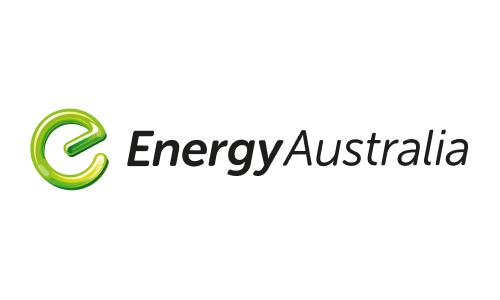
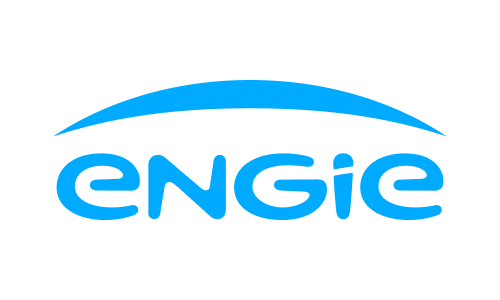
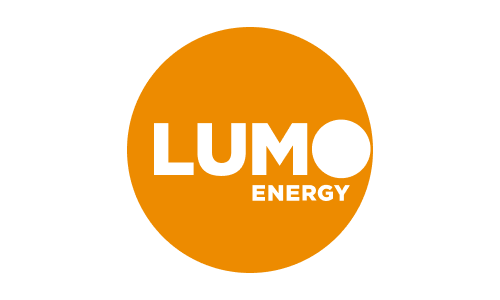

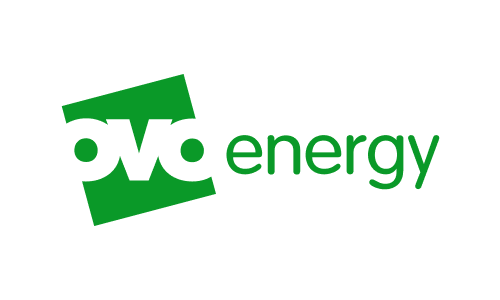
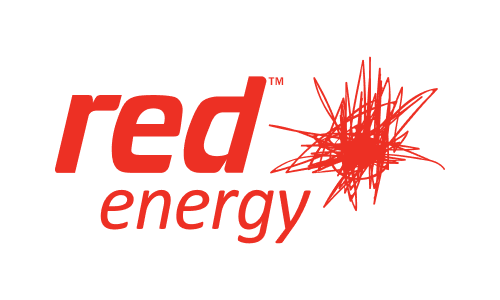
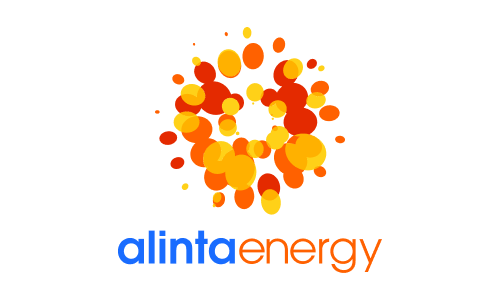
We don’t have access to all of the products available in your area: we do not compare all brands in the market, or all products offered by all brands. At times certain brands or products may not be available or offered to you. Learn more.
What’s the difference between types of QLD energy plans?
We’ve compiled this table on what our energy comparison service can offer for South East Queensland customers and potential benefits you can receive by switching plans. This information should be used as a guide only, as it may vary depending on your address and whether natural gas is available at your property, as well as the providers and plans currently available to compare.
Electricity only
Our service can detail options relevant to your property address, but not all plans or benefits may be available to you.
- Urgent same-day connections
- Solar feed-in tariffs
- Carbon neutral options
- Variable or fixed rates
- Standing offers
Gas only
If your home has natural gas, here’s how you can take control of your gas plan and save.
- Urgent three-business-day connections
- Tiered usage rates
- Standing offers
- Same-day connections
- Renewable energy options
Electricity and gas
You can search and choose new electricity and gas plans at the same time – even if you’re choosing different providers.
- Urgent connections
- Mix and match your retailers
- Solar, electricity and gas rates
- Bill comparison
- Variable or fixed rates
Electricity only
Different plans will offer different deals. Compare now to see which benefits may be available to you.
- New customer sign-up-credit
- No exit fees
- Guaranteed discounts (e.g. 12-month benefit period)
- Conditional discount (e.g. pay-on-time)
- Perks (free subscription services, discounts on fuel, vouchers and more)
Gas only
Different plans will offer different deals. Compare now to see which benefits may be available to you.
- New customer sign-up-credit
- No exit fees
- Guaranteed discounts (e.g. 12-month benefit period)
- Conditional discount (e.g. pay-on-time)
- Perks
Electricity and gas
Different plans will offer different deals. Compare now to see which benefits may be available to you.
- New customer sign-up-credit
- No exit fees
- Guaranteed discounts (e.g. 12-month benefit period)
- Conditional discount (e.g. pay-on-time)
- Perks (free subscription services, discounts on fuel, vouchers and more)
Top 5 things to know about energy in QLD
Not everywhere is competitive
Regional Queensland is a regulated market – meaning you typically can’t choose your energy retailer.
Concessions and rebates
You might be eligible for concessions on your electricity and gas bills, especially if you’re a concession card holder.
Rates and tariffs can vary
Energy rates and tariff types vary between energy providers, plans and what you’re eligible for.
Different prices for different regions
Electricity prices can vary depending on your distributor and the area you live in.
No disruption to your supply
Switching providers does not disrupt your energy supply and can take as little as two business days to be transferred to your new electricity provider.
It pays to compare
Compare energy plans in minutes and start saving today.
Simple to use
Get started by answering a few quick questions to help us understand your needs.
Compare & save
Save time and money by easily comparing options from a range of providers side-by-side.
Switching is easy
Follow a few easy steps online to switch to a new deal that suits you and your budget.

Why compare with us?
Our smart comparison technology is trusted, free, safe and secure.
Safe & secure
We take data privacy and security seriously, and will only use your information with your permission. You can read our full privacy policy here.

We believe the best decisions start with a comparison.
We’re proud to have helped millions of Aussies look for a better deal.


A guide to energy in QLD
Updated 26 June 2025

Find out how you could save money on your energy bill with David Koch
Don’t let the Sunshine State burn a hole in your wallet.

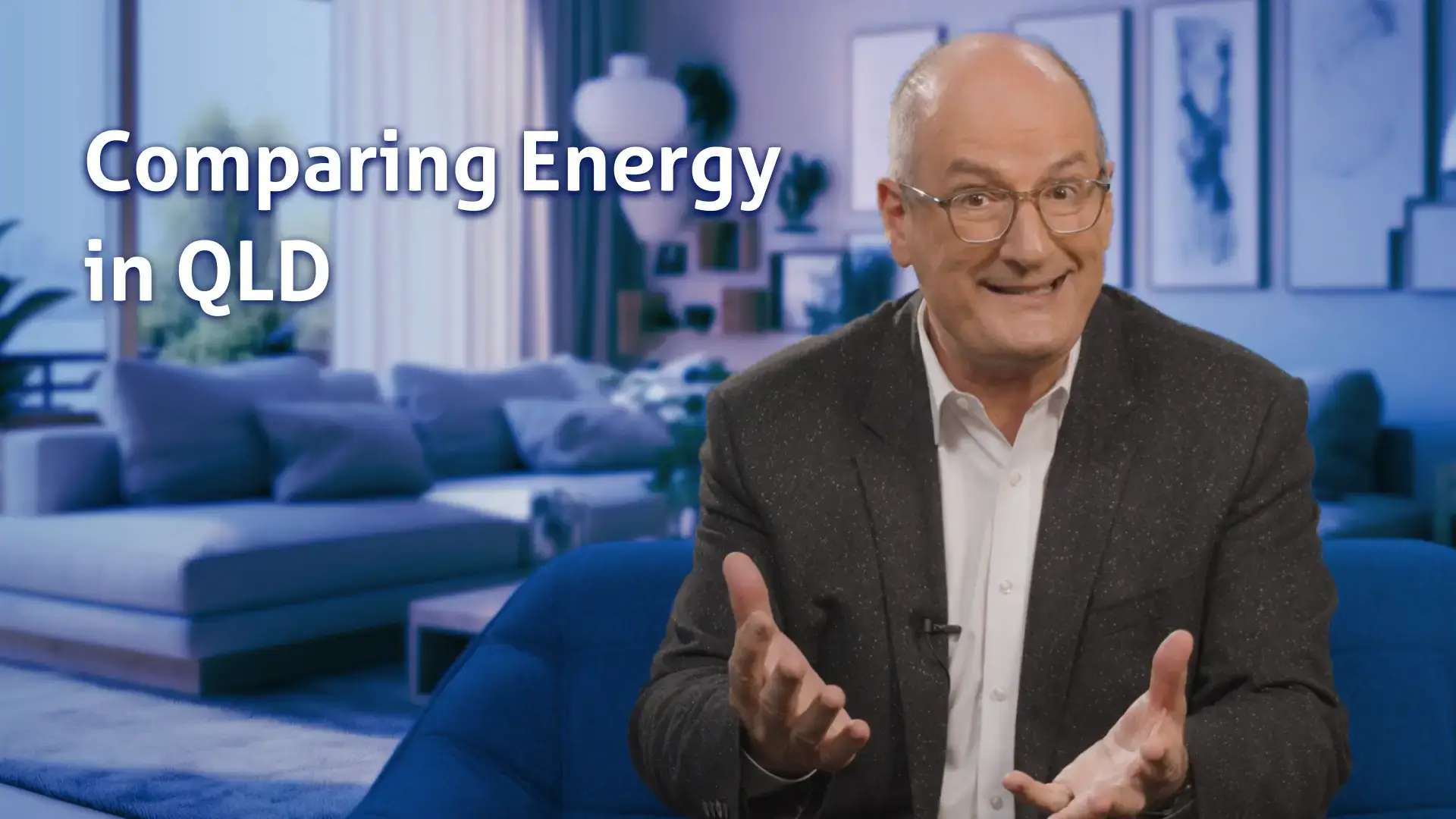

Queensland, the sunshine state. While some parts boast more than three hundred days of sunshine a year, trying to beat the heat could burn a hole in your wallet if you’re not careful. Worse still, a lot of people end up holding themselves hostage by simply accepting a price rise when their energy bill rolls around. In fact, around ten percent of households in Southeast Queensland are currently on a Default Market Offer, meaning they could be paying way more than they need to.
Compare the Market surveyed more than a thousand Aussies, and found over half had been switching off to save, when instead, they should be switching over. Turning off lights or using the aircon less could save you a dollar or two. But by far, the best way to save is by comparing energy plans to make sure you’re on a competitive deal. Energy in regional Queensland is regulated, meaning you can’t choose your retailer.
But if you live in Southeast Queensland, you have the power to save by shopping around for a better deal. Our experts Compare the Market have these tips to help you navigate different rates, tariffs, and discounts. Number one, keep your energy bills on hand. That way, you can compare plans based on your actual usage.
You’ll get more accurate estimates to help you find good value. Two, compare your electricity and gas separately. If you have both, purchasing separate plans from different providers will often work out cheaper. Number three, keep an eye out for the comparison percentage against the Default Market Offer.
That’s the maximum price energy retailers can charge residents and small businesses on a standing offer. The bigger the percentage, the better, but remember some retailers may have other deals and bill credit offers on top of the discount. And you don’t have to wait until your next bill’s due. Switching to a new electricity provider can take as little as two business days, which means you can potentially take advantage of your new rate sooner.
Meanwhile, gas suppliers will change over from your next billing date. It’s quick. It’s free, and Compare the Market makes it easier than you could imagine. Avoid bill shock and get comparing today with Compare the Market.
Expert tips for choosing the right energy for you
Get the top tips on choosing the right Queensland energy plan with our Head of Energy, Meredith O’Brien.

Keep your details handy
Have your electricity and/or gas bill information handy so you can input the details into our comparison tool. This will provide an estimate based on your historical usage and will factor additional electricity tariffs, if these apply to your property.
Consider your solar power usage
If you have solar but don’t have a battery, think about how much electricity you use at night. This may cost more than your solar feed-in tariff (FIT), so consider the balance between usage charges and your solar FIT.
Compare regularly
At least once a year is best, as rates and providers can change and discount or perks typically expire after 12 months.
The basics of QLD energy plans
Why compare electricity and gas plans in Queensland?

If it’s been a while since you’ve compared electricity or gas plans in South East Queensland, you could be paying too much for energy.
Here are just a few reasons to compare QLD energy providers:
- Take advantage of market offers. SE Queenslanders can compare market offers, which can include discounts or cheaper usage rates on your electricity or gas. This can lead to a significant saving for some households.
- Save with time of use tariffs. Smart meters are available in QLD, which allows some customers to opt for a time of use tariff. These account for the time of day you’re using electricity and may charge you less during quiet, low-demand periods. However be sure to consider whether a time of use tariff suits your household’s energy usage habits before making this change, as time of use tariffs aren’t for everyone.
- Enjoy an energy discount. If you haven’t compared energy plans in a while or moved house and never signed up for a plan, your discounts or incentives may have expired or you may be on a plan that never offered them, such as your retailer’s default or standing offer.
The easiest way to see if there’s a better (and potentially cheaper) energy plan for your home is to compare. You can get started today with our free energy comparison service!
How does the electricity market work in Queensland?
The energy market in Queensland works differently depending on where you live.
South East Queensland (SEQ)
If you live in SEQ, the most important things to know about the energy market are:
- You may be in the deregulated zone, meaning you have the option to choose between competitive market offers.
- The Default Market Offer (DMO) guides these market offers and acts as a benchmark reference price for all other electricity market offers.
- A standing offer is the offer you’re automatically put on if you’ve moved into a new premises but haven’t yet contacted a retailer to supply your energy.
- A standing offer is usually not as competitive as a market offer, as it will be the most expensive plan a retailer can generally charge you.
The DMO also applies in New South Wales, South Australia and the ACT. Meanwhile, Victoria has its own version of the DMO, known as the Victorian Default Offer.
Regional Queensland
If you live in regional Queensland, energy works differently. It’s important to understand that:
- Electricity prices in regional Queensland are regulated by the Queensland Competition Authority (QCA) – meaning you can’t choose your electricity retailer.
- Electricity is regulated because it costs a lot more for providers to service regional areas, so regulating prices ensures customers won’t be overcharged.
- Ergon Energy is the regional Queensland energy distributor and retailer for electricity.
- Regional Queenslanders may have some options with gas market offers.
How does the gas market work in Queensland?
There are two types of gas available in Queensland:
- Reticulated natural gas, which is distributed by pipelines.
- Liquified petroleum gas (LPG), which is available for purchase by the bottle.
Not all homes in QLD have access to gas by pipeline (reticulated natural gas); if you’re not eligible, you can use LPG. With LPG, you’ll have to order bottles when you run out. Bottles are usually 45kg each and a licensed gas fitter will deliver them to your home.
We don’t currently offer LPG through our comparison service. However, you can compare providers and plans for natural gas through our gas comparison service. It’s easy to compare the prices and rates and, best of all, it’s free!
Energy providers and distributors
Queensland energy distributors
Distributors supply energy to your home, while your QLD energy provider will send you your bill. QLD electricity distributors are:
- Energex (SEQ)
- Ergon Energy (regional QLD)
- Essential Energy (parts of southern QLD bordered with NSW).
QLD gas distributors are:
- AllGas Energy
- Australian Gas Networks.
Electricity providers in QLD
You can see which electricity providers in QLD retail energy by reviewing the list below.
N.B. Compare the Market does not compare energy products from all retailers on this list as we do not compare all brands in the market, or all products offered by all brands. Information about the partners we currently compare is available here.
- 1st Energy
- AGL
- Alinta Energy
- Amber Electric
- Ampol Energy
- CovaU Energy
- Diamond Energy
- Dodo Power & Gas
- Energy Locals
- EnergyAustralia
- ENGIE
- Future X Power
- GloBird Energy
- Kogan Energy
- Momentum Energy
- Nectr
- Origin Energy
- OVO Energy
- Pacific Blue Retail
- Powershop
- Red Energy
- Savant Energy
- Sumo
- Tango Energy
The information provided above is based in the postcodes of 4000, 4217 and 4558 and is accurate as of 6 June 2025. Data sourced from the Australian Energy Regulator (AER).
Electricity and gas providers in QLD
The following providers can offer both electricity and gas. Please note that providers may or may not offer a combined package and billing may fall on separate dates and separate agreements/contracts. This list may not include all providers due to the limited postcodes used (4000, 4217 and 4558).
Here’s a list of electricity and gas providers in QLD:
- AGL
- Alinta Energy
- CovaU Energy
- GloBird Energy
- Origin Energy
- Red Energy
The information provided above is accurate as of 6 June 2025. Data sourced from the Australian Energy Regulator (AER).
Cheapest electricity in different cities
Cheapest electricity in Brisbane
If you live in Brisbane, the table below can help you compare Queensland electricity providers to find the cheapest electricity plan that suits your needs.
| Provider/Retailer | Plan Name | Annual Cost (inc. discounts) | Annual Cost (excl. discounts) | Discount Benefit Period | Contract Term |
|---|---|---|---|---|---|
| OVO Energy | The Free 3 Plan | $1,710.00 | $2,040.00 | None | None |
| Ampol Energy | Ampol Energy Powering On | $1,750.00 | $1,750.00 | Ongoing | Ongoing |
| Alinta Energy | HomeSaver – Single Rate | $1,770.00 | $1,770.00 | None | 1 Year |
| Sumo | Sumo Switch Residential | $1,810.00 | $1,810.00 | Ongoing | Ongoing |
| Momentum Energy | Nothing Fancy Electricity | $1,880.00 | $1,880.00 | None | None |
| CovaU Energy | Freedom Residential Single | $1,900.00 | $2,150.00 | None | None |
| Energy Locals | Online Member | $1,910.00 | $2,010.00 | None | None |
| Kogan Energy | Kogan Energy with free FIRST | $2,000.00 | $2,000.00 | None | None |
| Powershop | Power House | $2,000.00 | $2,000.00 | None | None |
| EnergyAustralia | QLD Seniors Offer | $2,060.00 | $2,340.00 | 1 Year | 1 Year |
| Origin Energy | Origin Advantage Variable ePlus – One Big Switch | $2,070.00 | $2,070.00 | None | None |
| Red Energy | Qantas Red Saver | $2,070.00 | $2,070.00 | None | None |
| Dodo Power & Gas | Residential Market | $2,080.00 | $2,080.00 | None | None |
| AGL | Residential Seniors Saver | $2,090.00 | $2,090.00 | Ongoing | Ongoing |
| ENGIE | QLD-ENGIE Perks elec | $2,130.00 | $2,340.00 | Ongoing | Ongoing |
| Diamond Energy | Everyday Renewable Saver | $2,220.00 | $2,270.00 | None | None |
| Amber Electric | Standing Offer: Fixed Rate | $2,300.00 | $2,300.00 | None | None |
| Pacific Blue Retail | Blue Home | $2,310.00 | $2,310.00 | None | None |
| Tango Energy | Home Select | $2,310.00 | $2,310.00 | None | None |
| 1st Energy | 1st Saver – Single Rate | $2,320.00 | $2,320.00 | Ongoing | Ongoing |
| Future X Power | Standing Offer – Energex – RESI Anytime | $2,320.00 | $2,320.00 | None | None |
| GloBird Energy | GLOSAVE Residential (Flat Rate)-Energex | $2,320.00 | $2,390.00 | None | None |
| Nectr | Nectr Home Buzz | $2,330.00 | $2,330.00 | None | None |
| Savant Energy | Single Rate | $2,330.00 | $2,330.00 | None | None |
The prices and information provided above are based on a house with two to three adults with no solar panels or pool and in the postcode of 4000 and are accurate as of 6 June 2025. Data sourced from the Australian Energy Regulator (AER). Plans and prices are subject to change.
Cheapest electricity on the Gold Coast
If you live on the Gold Coast, see our list of cheapest prices and compare Queensland electricity providers on the Gold Coast to search for an electricity deal for you.
| Provider/Retailer | Plan Name | Annual Cost (inc. discounts) | Annual Cost (excl. discounts) | Discount Benefit Period | Contract Term |
|---|---|---|---|---|---|
| OVO Energy | The Free 3 Plan | $1,710.00 | $2,040.00 | None | None |
| Ampol Energy | Ampol Energy Powering On | $1,750.00 | $1,750.00 | Ongoing | Ongoing |
| Alinta Energy | HomeSaver – Single Rate | $1,770.00 | $1,770.00 | None | 1 Year |
| Sumo | Sumo Switch Residential | $1,810.00 | $1,810.00 | None | None |
| Momentum Energy | Nothing Fancy Electricity | $1,880.00 | $1,880.00 | None | None |
| CovaU Energy | Freedom Residential Single | $1,900.00 | $2,150.00 | None | None |
| Energy Locals | Online Member | $1,910.00 | $2,010.00 | None | None |
| Kogan Energy | Kogan Energy with free FIRST | $2,000.00 | $2,000.00 | None | None |
| Powershop | Power House | $2,000.00 | $2,000.00 | None | None |
| EnergyAustralia | QLD Seniors Offer | $2,060.00 | $2,340.00 | 1 Year | 1 Year |
| Origin Energy | Origin Advantage Variable ePlus – One Big Switch | $2,070.00 | $2,070.00 | 1 Year | 1 Year |
| Red Energy | Qantas Red Saver | $2,070.00 | $2,070.00 | None | None |
| Dodo Power & Gas | Residential Market | $2,080.00 | $2,080.00 | None | None |
| AGL | Residential Seniors Saver | $2,090.00 | $2,090.00 | Ongoing | Ongoing |
| ENGIE | QLD-ENGIE Perks elec | $2,130.00 | $2,340.00 | Ongoing | Ongoing |
| Diamond Energy | Everyday Renewable Saver | $2,220.00 | $2,270.00 | None | None |
| Amber Electric | Standing Offer: Fixed Rate | $2,300.00 | $2,300.00 | None | None |
| Pacific Blue Retail | Blue Home | $2,310.00 | $2,310.00 | None | None |
| Tango Energy | Home Select | $2,310.00 | $2,310.00 | None | None |
| 1st Energy | 1st Saver – Single Rate | $2,320.00 | $2,320.00 | Ongoing | Ongoing |
| Future X Power | Standing Offer – Energex – RESI Anytime | $2,320.00 | $2,320.00 | None | None |
| GloBird Energy | GLOSAVE Residential (Flat Rate)-Energex | $2,320.00 | $2,390.00 | None | None |
| Nectr | Nectr Home Buzz | $2,330.00 | $2,330.00 | None | None |
| Savant Energy | Single Rate | $2,330.00 | $2,330.00 | None | None |
The prices and information provided above are based on a house with two to three adults with no solar panels or pool and in the postcode of 4217 and are accurate as of 6 June 2025. Data sourced from the Australian Energy Regulator (AER). Plans and prices are subject to change.
Cheapest electricity on the Sunshine Coast
If you are living on the Sunshine Coast, you can compare a range of electricity providers. See our list of cheapest electricity prices below.
| Provider/Retailer | Plan Name | Annual Cost (inc. discounts) | Annual Cost (excl. discounts) | Discount Benefit Period | Contract Term |
|---|---|---|---|---|---|
| Ovo Energy | The Free 3 Plan | $1,710.00 | $2,040.00 | None | None |
| Ampol Energy | Ampol Energy Powering On | $1,750.00 | $1,750.00 | Ongoing | Ongoing |
| Alinta Energy | HomeSaver – Single Rate | $1,770.00 | $1,770.00 | None | 1 Year |
| Sumo Energy | Sumo Switch Residential | $1,810.00 | $1,810.00 | None | Ongoing |
| Momentum Energy | Nothing Fancy Electricity | $1,880.00 | $1,880.00 | None | None |
| CovaU Energy | Freedom Residential Single | $1,900.00 | $2,150.00 | None | None |
| Energy Locals | Online Member | $1,910.00 | $2,010.00 | None | None |
| Kogan Energy | Kogan Energy with free FIRST | $2,000.00 | $2,000.00 | None | None |
| Powershop | Power House | $2,000.00 | $2,000.00 | None | None |
| EnergyAustralia | QLD Seniors Offer | $2,060.00 | $2,340.00 | 1 Year | None |
| Origin Energy | Origin Advantage Variable ePlus – One Big Switch | $2,070.00 | $2,070.00 | 1 Year | None |
| Red Energy | Qantas Red Saver | $2,070.00 | $2,070.00 | None | None |
| Dodo Power & Gas | Residential Market | $2,080.00 | $2,080.00 | None | None |
| AGL | Residential Seniors Saver | $2,090.00 | $2,090.00 | Ongoing | None |
| ENGIE | QLD-ENGIE Perks elec | $2,130.00 | $2,340.00 | Ongoing | None |
| Diamond Energy | Everyday Renewable Saver | $2,220.00 | $2,270.00 | None | None |
| Amber Electric | Standing Offer: Fixed Rate | $2,300.00 | $2,300.00 | None | None |
| Pacific Blue Retail | Blue Home | $2,310.00 | $2,310.00 | None | None |
| Tango Energy | Home Select | $2,310.00 | $2,310.00 | None | None |
| 1st Energy | 1st Saver – Single Rate | $2,320.00 | $2,320.00 | Ongoing | None |
| Future X Power | Standing Offer – Energex – RESI Anytime | $2,320.00 | $2,320.00 | None | None |
| GloBird Energy | GLOSAVE Residential (Flat Rate)-Energex | $2,320.00 | $2,390.00 | None | None |
| Nectr | Nectr Home Buzz | $2,330.00 | $2,330.00 | None | None |
| Savant Energy | Single Rate | $2,330.00 | $2,330.00 | None | None |
The prices and information provided above are based on a house with two to three adults with no solar panels or pool and in the postcode of 4558 and are accurate as of 6 June 2025. Data sourced from the Australian Energy Regulator (AER). Plans and prices are subject to change.
Energy charges
How are energy costs calculated in Queensland?
In Queensland, energy costs are calculated using two different charges:
- A fixed daily supply charge (cents per day) to maintain infrastructure and supply power to your home.
- A usage rate based on kilowatts per hour (kWh) for electricity and megajoules (MJ) for natural gas.
Usage rates may be charged at a single standard rate, charged regardless of the time of day or night you use your energy. If you have a smart meter, though, you may be able to take advantage of variable rates (i.e. time-of-use tariffs), which charge you depending on what time of the day you use your energy. Or you may have a separate meter for appliances that don’t require continuous power such as your hot water system, or pool pump. This is often referred to as a controlled load tariff.
What is the average electricity bill in Queensland?
The energy market differs depending on which region of Queensland you’re in, so the average bill won’t apply to everyone across the state. Other factors such as the number of people in your home, energy usage, tariffs and your provider may also affect your bill.
According to Independent Competition and Regulatory Commission (ICRC), the average price for Brisbane households in 2023-24 was $2,543, with time of use offers ($2,518) being slightly more expensive than single rate offers ($2,489) on average.1
How much could Queenslanders save on their average electricity bill?
If you’re a residential customer in South East Queensland, there may be opportunities to save by switching to a new electricity plan. According to the Australian Energy Regulator (AER), you could save significantly by switching from a standing offer to the lowest market offer available.2
Of course, the actual amount you could save can vary and will depend on your energy usage, so always ensure you understand the terms of the plans you’re comparing.
You can compare electricity providers in QLD to search for a great value plan that suits your budget and energy needs.
Types of tariffs in QLD
The age and type of electricity meter your home has will determine which tariffs are available to you. However, keep in mind that names may vary between QLD electricity providers.
Tariff 11 – Single rate tariff
This is a flat rate tariff where you’ll pay the same price for each unit of electricity used, plus a daily supply charge. It’s the most common, especially for regional QLD customers.
Tariff 12 – Time of use (TOU) tariff
This tariff is calculated on how much energy is used at certain times. It includes high usage charges during peak times and lower charges at off-peak or shoulder times, as well as a daily supply charge. You’ll need a smart meter to measure usage for this tariff.
Tariff 14 – Demand tariff
Demand charges are based on how much power is used or how fast you use electricity during high demand usage periods. This is an additional charge for using electricity during the highest peak demand period and is applied to encourage customers to reduce their electricity usage during peak demand periods. A demand tariff can only be applied if you have a Smart Meter.
Tariff 31/33 – Controlled load tariff (also known as dedicated circuit, night rate, super economy)
With controlled load tariffs, appliances like pool pumps and hot water systems are metered separately from the main meter for your home as they don’t require continuous power supply. Tariff 31 guarantees supply for 8 hours per day, while Tariff 33 supplies electricity for 18 hours per day.
Regional customers must first be on Tariff 11, 12 or 14 to access one of these tariffs.
Rebates and concessions
Who is eligible for electricity rebates in QLD?
Most Queensland Government rebates are available to those who have at least one of the below:
- Queensland Seniors Card
- Services Australia Pensioner Concession Card
- Services Australia Health Care Card
- Department of Veterans’ Affairs Gold Card (and receive the War Widow/er Pension or special rate TPI Pension)
- Asylum seeker status ImmiCard.
Find a full list of QLD concessions and rebates here.
Solar rebates in QLD
The following solar initiatives are available in Queensland:
- Small-scale renewable energy scheme. Households using solar could earn small-scale technology certificates (STCs). For every megawatt your system generates, you’ll earn one STC, which your solar installer or retailer generally sells on your behalf. Each STC can earn $40 on the STC clearing house.3
- Solar feed-in tariff. If you have a solar power system installed, any unused energy you produce can be fed into the electricity grid. You could receive a payment for this exported energy, which is known as the solar feed-in tariff.
Meet our energy expert, Meredith O’Brien
As the Head of Energy at Compare the Market, Meredith O’Brien believes in educating Australian customers about the everchanging gas and electricity market so they can adjust their energy usage habits and get the most out of their energy plans.
Meredith has six years within the energy industry, following 15 years of experience in financial services and is currently studying a Master of Business Administration. Meredith is a dedicated customer advocate who is passionate about empowering Australians to find the right products to suit their needs by removing the confusion from comparing.
1 ICRC. Retail electricity price investigation 2024-27. Published May 2024. Accessed March 2025.
2 Australian Energy Regular. Default market offer prices 2024-25. Accessed December 2024.
3 Clean Energy Regulator, Australian Government. Renewable energy certificates. Accessed December 2024.